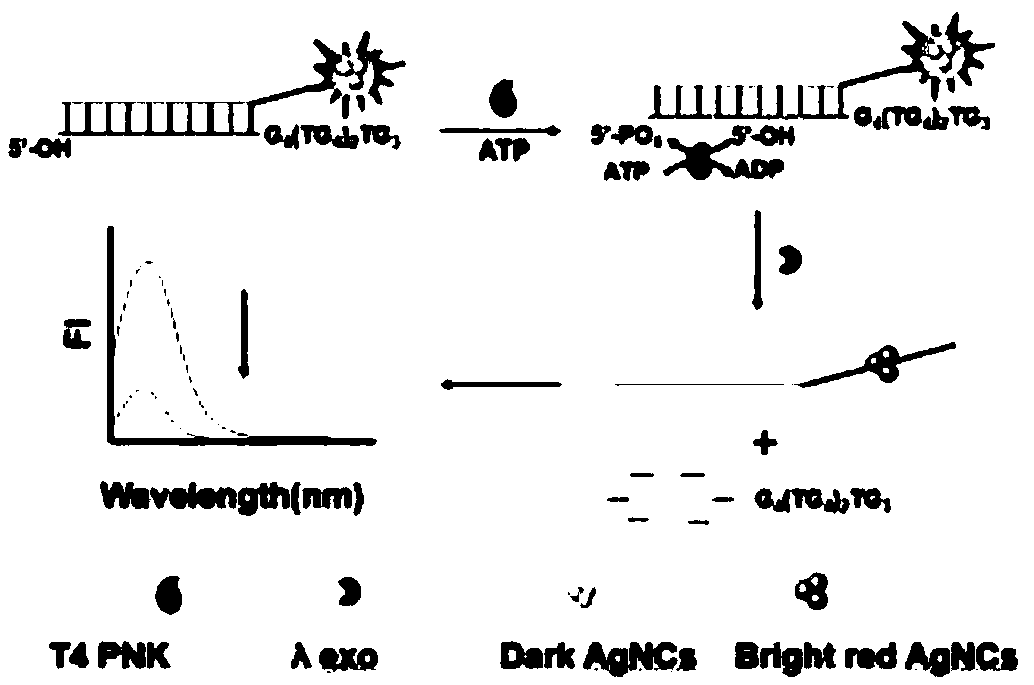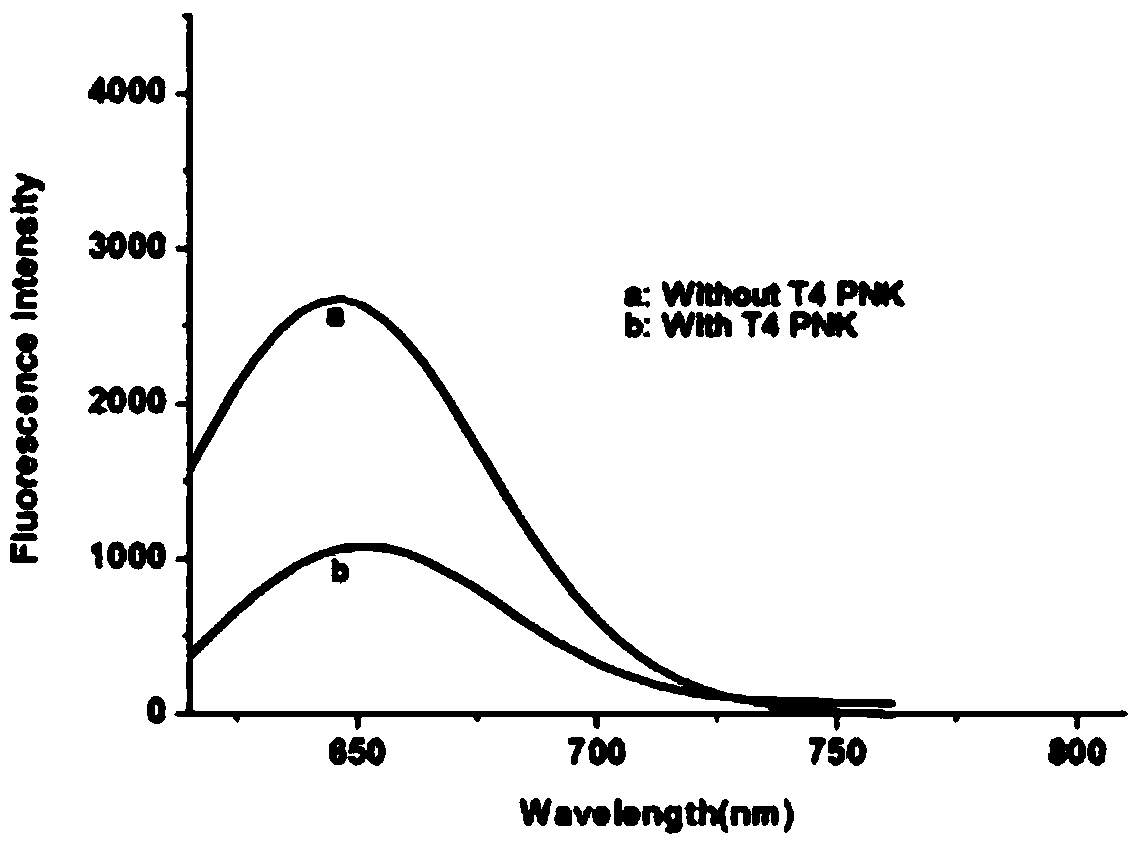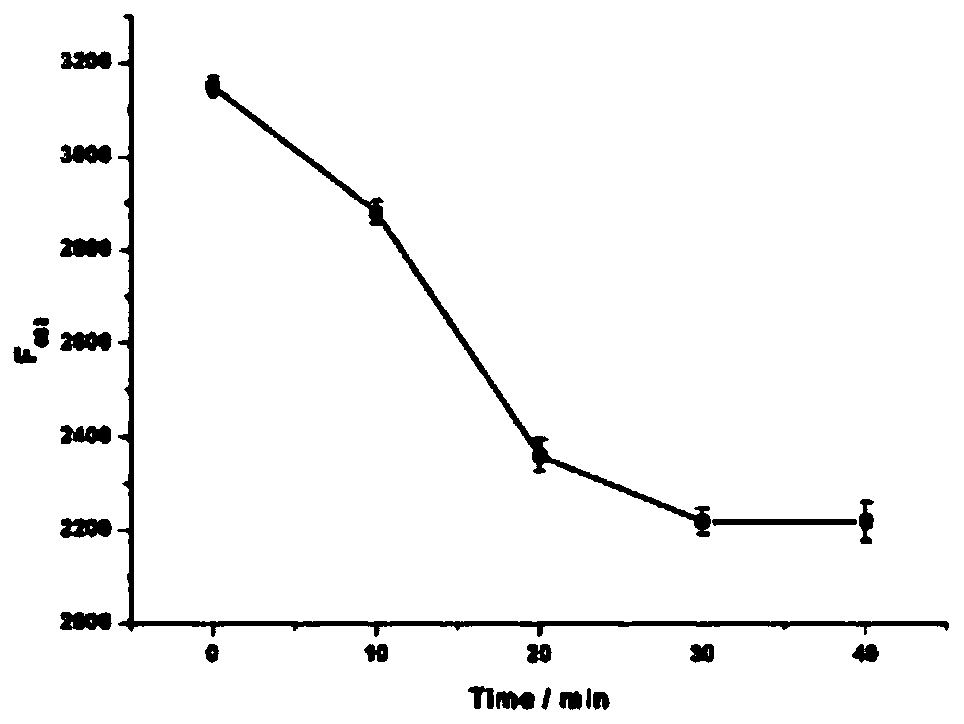Silver nanocluster fluorescent probe based T4 polynucleotide kinase activity detecting method
A polynucleotide and detection method technology, which is applied in the field of T4 polynucleotide kinase activity detection based on silver nanocluster fluorescent probes, and achieves the effects of simple operation and significant clinical application value.
- Summary
- Abstract
- Description
- Claims
- Application Information
AI Technical Summary
Benefits of technology
Problems solved by technology
Method used
Image
Examples
Embodiment 1D
[0043] The synthesis of embodiment 1 DNA sequence
[0044] In this example, two DNA sequences were synthesized by Shanghai Sangon Biotechnology Co., Ltd., and their base sequences are respectively:
[0045] DNA S1: 5′-CCCTTAATCCCCTATAATAAATTTTAAATATTATTTATTAAT-3′,
[0046] DNAS2: 5'-ATTAATAAATAATATTTAAAATTTATTATAGGGTGGGGTGGGGTGGGG-3';
Embodiment 2
[0047] Example 2 Preparation of Silver Nanocluster Templated DNA S1
[0048] Add 10 μM DNA S1 in Example 1 to the pH7 phosphate buffer, then heat at 90°C for 5min and cool to room temperature, add AgNO to the solution 3 , where Ag + The molar ratio to DNA S1 is 6.67:1, and incubated at room temperature for 30min to form DNA-Ag + Complex, the prepared DNA-Ag + Complex with NaBH 4 processing, where NaBH 4 and Ag + The molar ratio of the silver nanoclusters templated DNAS1 (DNA-AgNCs) solution is 1:1, and then stored in the dark for 12 hours to prepare the silver nanocluster-templated DNAS1 (DNA-AgNCs) solution.
Embodiment 3
[0049] Example 3 Activity detection of T4 PNK
[0050] Mix 6 μM DNA S2 dissolved in TE buffer in Example 1 and the DNA-AgNCs (DNA S1) solution prepared in Example 2 at a concentration of 1× in the DNA hybridization solution, and heat to 95°C for 50s, then slowly cool down to room temperature and incubate for 20min to hybridize the two DNA strands to obtain hybridized DNA, add the hybridized DNA to Tris-HCl buffer for DNA phosphorylation reaction to obtain a reaction mixture, and incubate the reaction mixture at 37°C After 30 minutes, heat to 75°C for 10 minutes to inactivate the activity of λexo to obtain the final reaction solution.
[0051] The hybridization buffer described therein is 10mM Tris-HCl, 1.0mM EDTA and 1.0M sodium chloride, pH 7.4;
[0052] Wherein, the Tris-HCl buffer is 10mM MgCl 2 , 5 mM DTT, 0.5 mM ATP, 10 units λexo and T4 PNK.
[0053] The T4 PNK concentration gradient in this embodiment is 0, 0.01, 0.1, 0.5, 1, 5, 10 and 12.5 U / mL;
[0054] The result...
PUM
 Login to View More
Login to View More Abstract
Description
Claims
Application Information
 Login to View More
Login to View More - R&D
- Intellectual Property
- Life Sciences
- Materials
- Tech Scout
- Unparalleled Data Quality
- Higher Quality Content
- 60% Fewer Hallucinations
Browse by: Latest US Patents, China's latest patents, Technical Efficacy Thesaurus, Application Domain, Technology Topic, Popular Technical Reports.
© 2025 PatSnap. All rights reserved.Legal|Privacy policy|Modern Slavery Act Transparency Statement|Sitemap|About US| Contact US: help@patsnap.com



